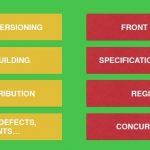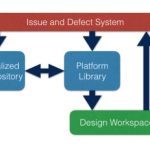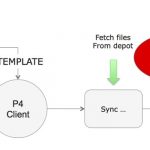Small EDA companies often focus on a single point tool and then gradually over time they add new, complementary tools to start creating more of a sub-flow to help you get that next SoC project out on time. The most astute EDA companies often choose to partner with other like-minded companies to create tools that work together well,… Read More
IC Design Management: Build or Buy?
When I first started doing circuit design with Intel at the transistor level back in the late 1970’s we had exactly two EDA tools at our disposal: an internally developed SPICE circuit simulator, and a commercial IC layout system. Over the years at Intel the internal CAD group added many more automation tools: gate level simulator,… Read More
CEO Interview: Simon Butler of Methodics
It has been interesting to watch Methodics transform from an EDA company with their VersIC design management product to Life Cycle Management with ProjectIC, and now a Systems Company with WarpStor. Methodics was founded in 2006 by 2 ex-Cadence experts in the Custom IC design tools space, Simon Butler and Fergus Slorach. Today… Read More
Requirements Management and IP Management Working Together
I first heard about requirements management back in 1995 while marketing a graphic HDL entry tool for an EDA vendor, and it sounded like a very useful automation approach, however our team quickly discovered that there were too many different vendors for requirements management, so there could be no simple way to integrate with… Read More
5 Reasons Why Platform Based Design Can Help Your Next SoC
Semiconductor design IP and verification IP have been around for decades, but just because your company has lots of IP doesn’t mean that you’re getting all of the benefits of a design reuse methodology. Maybe your business has encountered some of the following issues:
Go Native – With Methodics at DAC in Austin
DAC is often a yearly reflection point for the companies that exhibit and attend. For the innovators it is an opportunity to look back and see a year of progress and development. Fortunately, this is the case for Methodics, which has had a strong year both in terms of business and technical development. Though, we easily see how these… Read More
Bulking Up of Design Data Calls for Version Control on Steroids
Even though design management systems are gaining popularity as a way to manage design data growth, they actually contribute to the problem of exploding data size. What we already know is that a linear increase in die size causes exponential growth in chip area, and that smaller feature sizes compound this effect in the same way.… Read More
Making PLM Actually Work for for IC Design
The topic of Product Lifecycle Management (PLM) conjures up images of usage on airplanes, tanks and cars. That’s because it was developed decades ago to help make product development and delivery more efficient for big expensive manufactured products. It worked well for its intended markets by combining and managing all the … Read More
What SOC Size Growth Means for IP Management
Whether or not in the past you believed all the of rhetoric about exploding design complexity in SOC’s, today there can be no debate that SOC size and complexity is well beyond something that can be managed without some kind of design management system. As would be expected, development of most larger designs relies on a data management… Read More
The (not so) Easy Life of an SOC Design Integrator
How can large SOC projects effectively integrate sub blocks and IP into a stable version for release or internal development? The person responsible for integrating SOC sub blocks into a validated configuration for release has a difficult task. Usually there are many sub-blocks, each undergoing their own development. There… Read More











